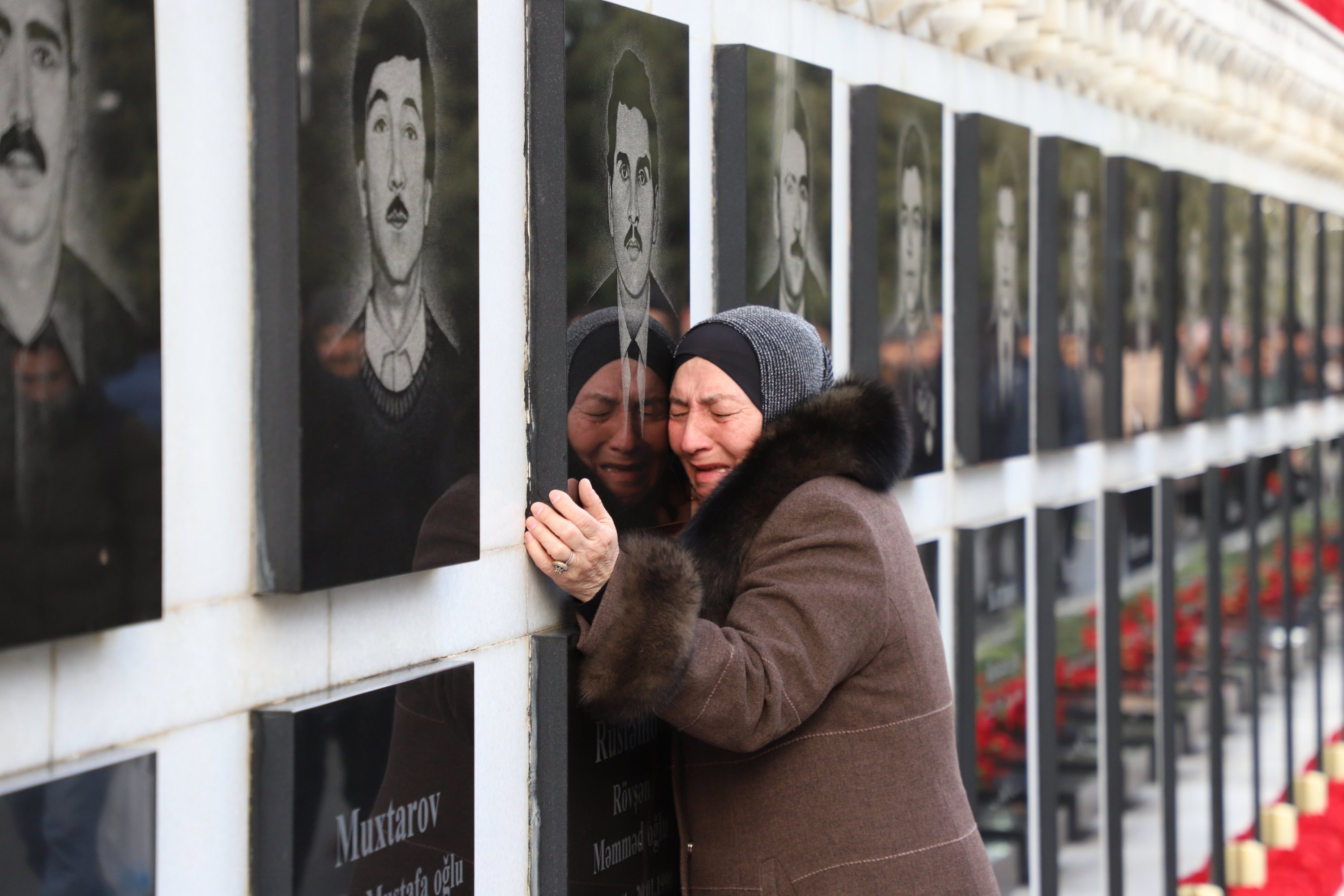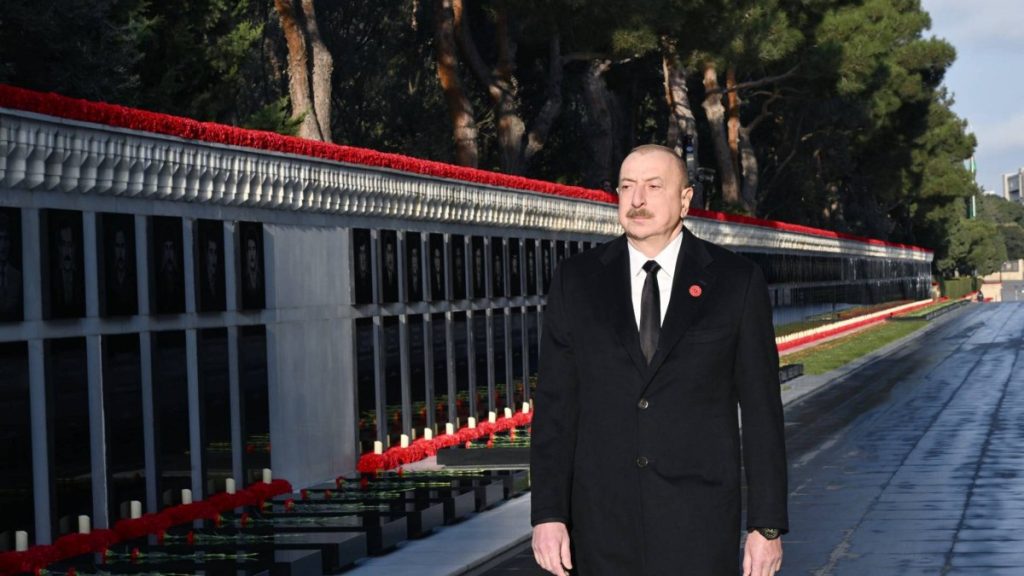The pain of “Black January,” a massacre that claimed the lives of 147 civilians, including women and children, remains etched in Azerbaijan’s collective memory as the nation marks its 35th anniversary.
On the night of Jan. 19, 1990, Soviet tanks rolled into Baku under the pretext of suppressing unrest, seeking to quash growing nationalist fervor and intimidate the Azerbaijani people. However, the operation turned into a brutal crackdown. Soldiers opened fire indiscriminately, killing civilians who had gathered to protest Soviet policies and defend their land. Among the dead were women and children. As Jan. 20 came to an end, an incredible devastation was left behind. Still, the tragedy became a rallying cry for independence, serving as a critical turning point in Azerbaijan’s journey to freedom after 70 years of Soviet rule.
Darkest night before dawn
Across Azerbaijan and the Turkic world, the victims are remembered annually. Commemorations include solemn visits to Martyrs’ Alley in Baku, where those who perished defending their homeland are laid to rest. This year, hundreds of thousands gathered to pay tribute, their unity underscoring the enduring significance of the sacrifices made that night.
Reflecting on the event, associate professor Ramin Sadık from Bayburt University said: “The people stood united against the brutal onslaught of tanks and armored vehicles, resisting with remarkable courage. When we look back at the martyrs of that day, we see horrifying images of tank tracks running over their bodies. I remember it vividly, as I was just a child at the time. Can you imagine the sheer brutality? Some women, holding children as young as 7 to 9 years old, were murdered. These women, many of them mothers, carried their babies in their arms and marched to the square. They stood firm, embodying an unparalleled spirit of resistance.”
The massacre, known in history as the “January 20 Massacre,” also left 744 injured and over 400 detained. Images and stories of the massacre continue to educate new generations through exhibitions, panels and symposiums, ensuring that the horrors of that night are never forgotten.
Sadık vividly recounted: “Both men and women fought side by side to prevent Soviet tanks from entering the city. They stood before the tanks, declaring, ‘You cannot enter this city unless you trample over us.’ And tragically, the tanks did just that, crushing them. The civilian massacre was horrifying, yet the Russian administration failed to achieve its goal. The Azerbaijani people declared that Baku was impassable, just as the Turkish people had declared Çanakkale impassable in 1915.”
The next day, over a million Azerbaijanis flooded Azadlık (Freedom) Square in silent mourning. The victims were laid to rest in Mountain Park, later renamed Martyrs’ Alley, which had previously served as a Soviet recreational site. This symbolic reclamation marked a transformation in Azerbaijan’s national consciousness.

The nation remembers
The massacre deepened mistrust in the Soviet regime, galvanizing Azerbaijan’s push for independence. Just months later, on Feb. 5, 1991, the nation officially adopted the name “Republic of Azerbaijan.” Independence was declared on Aug. 30, 1991, with final affirmation on Oct. 18, 1991.
Sadık emphasized: “The struggle, which intensified following the Jan. 20 massacre, culminated on Oct.18, 1991, when the Azerbaijani Parliament signed the Declaration of Independence, officially separating from the USSR. This marked Azerbaijan’s second independence in the same century.”
The removal of the Soviet army from Azerbaijan became a priority. Sadık stated: “Following the declaration of independence, the massacre committed by Armenian forces in Khojaly, with the support of Russian soldiers in February 1992, fueled widespread anger among the Azerbaijani people toward the Russian military presence. The government, led by Ebulfez Elchibey, negotiated an agreement with Russia, resulting in the withdrawal of 80,000 Russian soldiers from Azerbaijan. This made Azerbaijan the first former Soviet republic to successfully remove Russian military forces.”
Karabakh: Fight for justice
For decades, Azerbaijani lands, including the Karabakh region, were under Armenian occupation. Following the 2020 Nagorno-Karabakh War, Azerbaijan successfully liberated its territories after a decisive 44-day military campaign. The victory marked the end of a 32-year struggle, with Azerbaijan reaffirming its sovereignty and declaring, “Karabakh is Azerbaijan.”
The events of the bloody January massacre are a stark reminder of the cost of freedom. Despite centuries of external aggression, Azerbaijan has emerged as a resilient and independent nation. President Ilham Aliyev, addressing the nation on this solemn occasion, emphasized the unyielding spirit of the Azerbaijani people: “The sacrifices of our martyrs will forever be honored. Their legacy is the foundation of our sovereignty.”
As Sadık poignantly stated: “The tragedy did not end that night. On Jan. 21-22, the Russian soldiers acted with reckless cruelty. They fired indiscriminately, even killing a woman cooking in her own kitchen. They shot randomly into buildings. Five professors, traveling in a car to work in Baku, were crushed when an armored vehicle ran over their vehicle, killing them instantly. A 13-year-old student, standing by a window to see what was happening outside, was shot and killed. Yet, the events of that day marked the beginning of the end for the Soviet Union. Within a year, the Soviet Union had disintegrated, and Azerbaijan gained its full independence.”
As Azerbaijan commemorates this tragic chapter, it also celebrates the resilience and unity that transformed the darkest night into the dawn of independence. The memory of Jan. 20, 1990, remains a beacon of hope and a testament to the enduring pursuit of freedom.


